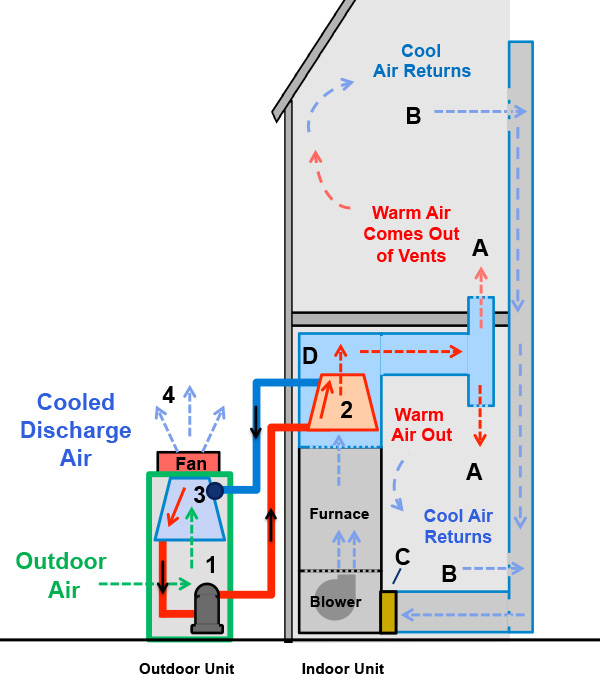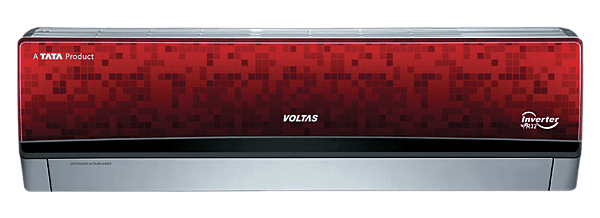Ductless Air Conditioning
Hey guys, some day or the other you might have heard about ductless air conditioning and wondered what it is and how it works. Well today all your queries about ductless air conditioning will be solved.
What is Ductless Air Conditioning:
A ductless air conditioner also referred to as a 'mini split system' or 'ductless mini split system' is an easy, convenient and efficient way to gain conditioned air without the expense or hassle of adding ducts to your home or business just for air-conditioning. A wall-mounted AC is also an ideal solution for homes that do not have a duct system or weren’t originally designed for air conditioning(homes from the mighty 90's).
How does Ductless Air Conditioning work:
All AC units uses the same outdoor components that cools the air inside a home. The difference with a ductless AC system is where that air is cooled and how it's distributed.
Central-air systems send refrigerant to a huge central air handler that then blows cool air into the house through a network of ducts inside your house. Ductless systems pump coolant to compact indoor units within individual rooms. Each split AC unit operates like a miniature air handler, delivering cold air into its own zone only when turned on.
Because there are no ducts, these systems don't have the air leaks, heat gains, or pressure imbalances that can significantly reduce the efficiency and comfort of a central-air setup. And installation is a really fast process. It's far easier and faster to fish a narrow bundle of insulated refrigerant lines through a house than to retrofit bulky ducts.
You're likely to save approximately 34% of electricity by replacing window AC units with a ductless system. Some some technical talk: It is approximately 3 feet long, 10 inches tall and 10 inches deep and is mounted on the wall. Most of the systems available in the market allow for 4 indoor units connected to 1 outdoor unit. That means you can cool 4 rooms with single outdoor unit. The outdoor unit, primarily known as a condensing unit consists of a compressor, fan and a condenser coil. This unit varies in size based on the needs of the area to be cooled and a number of indoor units, but is typically not any bigger than 45 inches tall and 36 inches wide. Depending on your cooling needs you may need multiple indoor and outdoor units to provide your home or business with adequate temperature settings.
An edge over split AC:
- No heat loss : Moving conditioned air through duct network is really inefficient as discussed earlier in the article, with heat loss and leakage of as high as 25% in split systems. Cooled air is easily lost to unconditioned and leaky ducts, putting stress on your electrical system and causing huge losses. With no distribution components, ductless systems do not have this problem and they work more efficiently.
- Better comfort control: With multiple indoor units, a zoned-centered cooling approach is possible with ductless systems, allowing for savings and improved comfort through micro-managing each part of your home for family member preference, unlike central systems, which measure temperature conditions according to the readings of a single, isolated(sometimes not) thermostat.
- Higher efficiency: Ductless systems are extremely high SEER(Seasonal energy efficiency ratio), with some systems boasting ratings pushing 30 SEER (compared to the split system’s 14 SEER rating). Though ductless systems cost a little bit more on installation, those cost are more than recouped over the life of these extremely efficient cooling systems.
- Quieter operation: Unlike the noisy drone of a split system’s interior blower and exterior unit, interior wall-mounted ductless components are quieter than a whisper(Not kidding guys), and outdoor components as quiet as a refrigerator.
- Flexibility :Ductless systems are a great option for older homes that don’t have the space to accommodate duct-work – no boxy bulkheads, no lost closet space.
Guys I hope all your doubts about ductless AC's must be cleared. Still you can ask me anything related to this in the comment section below.
That's it for today guys, show some love and share it with all your friends and family. See you all in the next post.
Signing Off,
Your Geeky Friend
Your Geeky Friend

























